The Irish Wolfhound: Why the archetypal ‘gentle giant’ was a favourite of the aristocracy, John F. Kennedy and now, Trudie Styler
Mythical and magnificent, yet gentle and intensely loyal, the Irish wolfhound can only be described in superlatives, finds Flora Watkins.
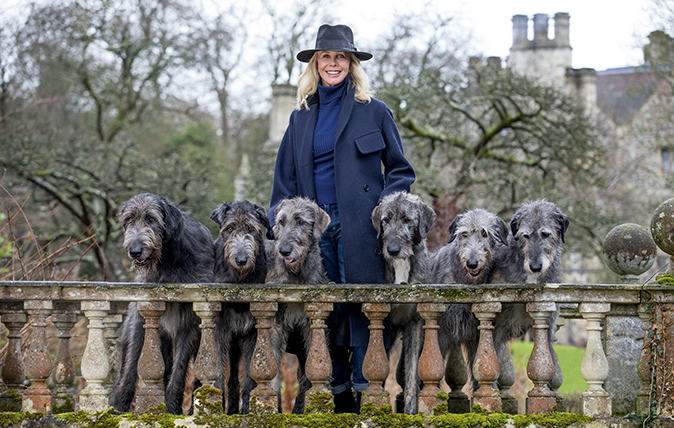

An early-19th-century painting of an Irish wolfhound by the artist Reinagle shows the dog ‘looking back over his shoulder into the past’. It’s an arresting image and one with which devotees are familiar, for myths and legends swirl around the wolfhound’s origins, like so many ancient sites.
It was moving to a 16th-century house near Stonehenge that sparked Trudie Styler’s love affair with the breed in the early 1990s. Something about the place itself inspired her husband, she recalls. ‘Sting just said to me “I’d like to buy a wolfhound. I think you’d enjoy having your own dog and this house sort of looks like it should be for wolfhounds”.’
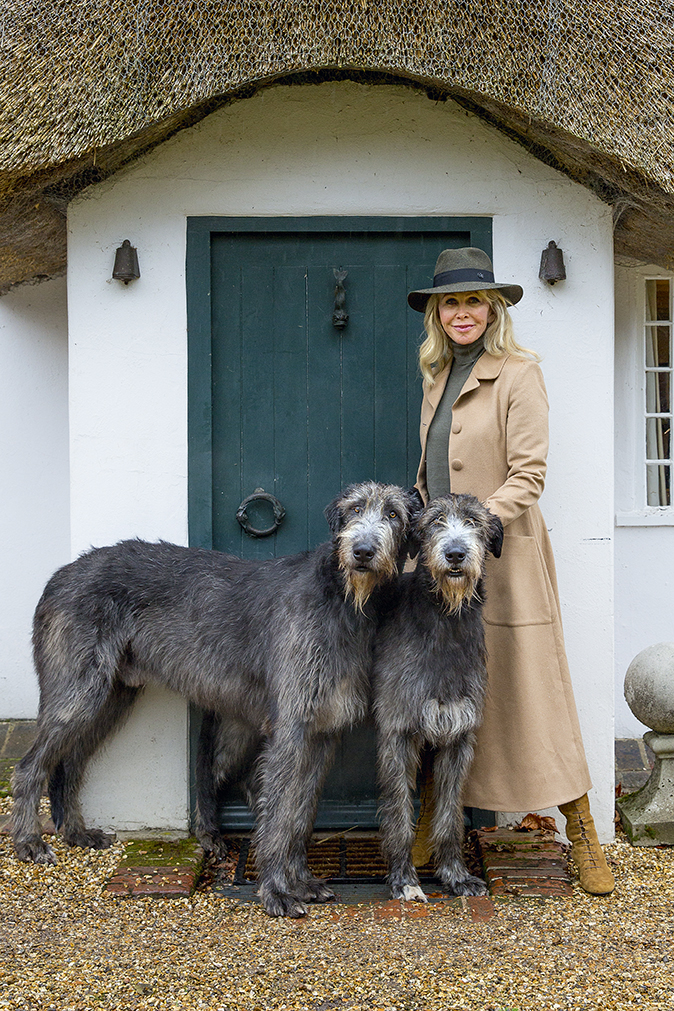
The family acquired two puppies, Gideon and Finbarr, who immediately ‘seemed to fit not just Lake House, but into our lives – so loyal and kind around children, so loyal to me; the ideal dog for this lovely place.’
Although Gideon lived to a good age, Finn ‘didn’t go on as long’ – wolfhounds, sadly, only tend to live for 6–10 years – and the experience prompted Miss Styler to found her Dukesarum kennel, committed to breeding for health and longevity.
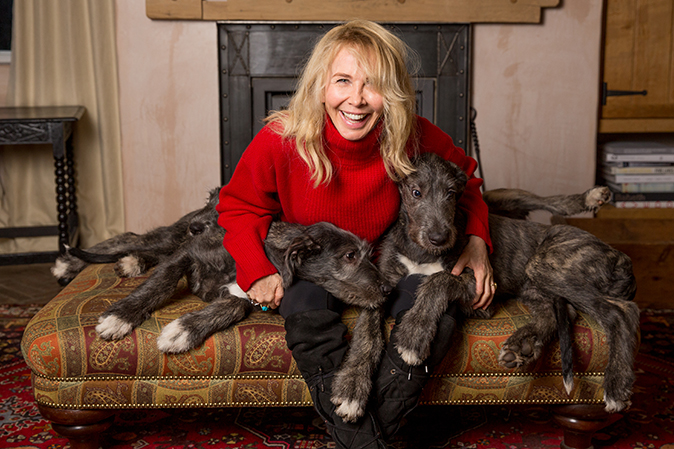
‘Lake House was built in 1578 by a man called George Duke and Old Sarum was an Iron Age hill fort, the site of the old settlement, north of Salisbury,’ Miss Styler explains. Putting Duke and Sarum together gave her the perfect prefix for ‘these majestic dogs’.
When I visit, there are 11 Dukesarum wolfhounds in residence, including Cainagh and Winston, ‘our house dogs’, a handsome young hound called Atticus – ‘the second love of my life,’ his mistress laughs – and four 13-week-old puppies, with coltish long legs and endearingly huge paws.
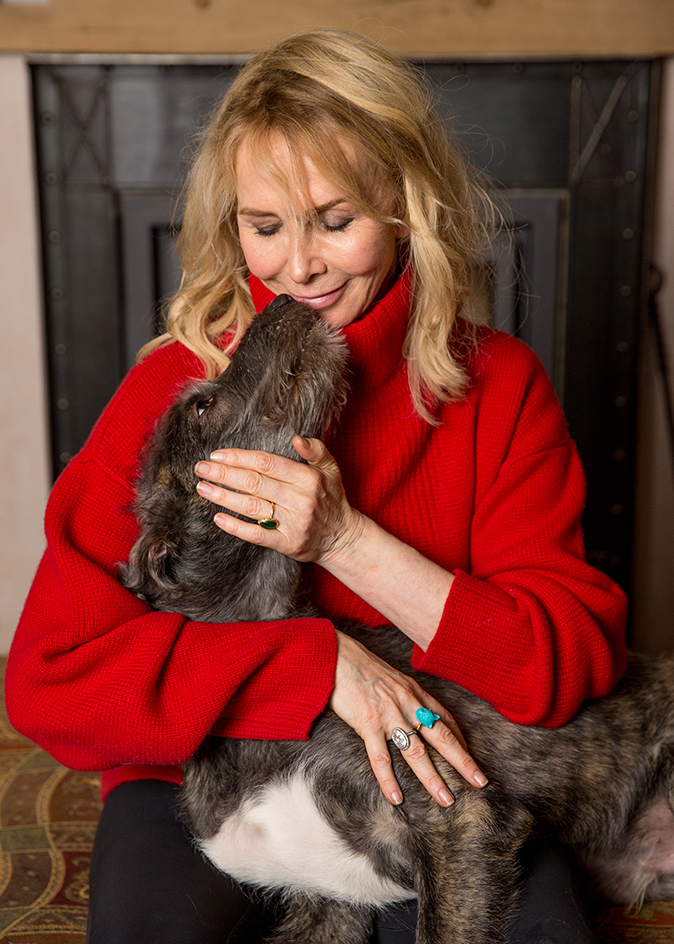
‘It’s tremendous going for walks up the old drover’s road towards Stonehenge when there are seven or eight at a time,’ muses Miss Styler.
Sign up for the Country Life Newsletter
Exquisite houses, the beauty of Nature, and how to get the most from your life, straight to your inbox.
‘They can really gallop up there on that large stretch of land; they’re in their element. It’s like a sight from a different century.’
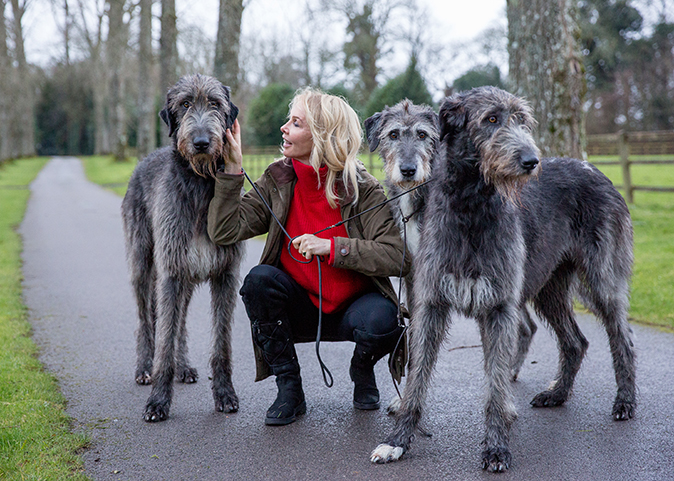
If it isn’t hard to imagine Uther Pendragon walking among the Dukesarum wolfhounds on Salisbury Plain, that’s because the breed, in some form, dates from well before the time of the Arthurian legends.
Hilary Jupp, a retired breeder who’s researched the Irish wolfhound for 40 years, says that, although ‘the name is quite a recent one, the hound itself goes back far into the mists of time’.
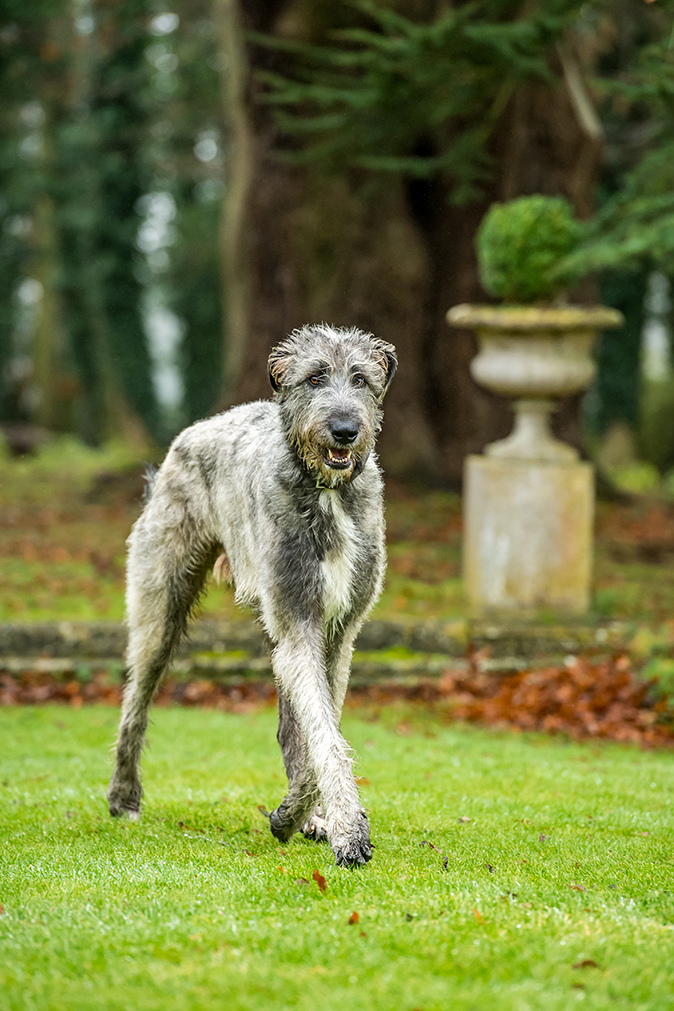
There are mentions of the cú – translated, variously, as wolf dog or Irish hound – in Irish laws pre-dating Christianity. Only kings and the nobility were allowed to own the great Irish hound, which was used to hunt wolves and deer, to protect herds and went into battle alongside its master. Tales abound of the Fianna and their greatest chief, Fionn mac Cumhall, hunting and fighting with their colossal hounds.
However, Mrs Jupp cautions that some of the stories about wolfhounds – such as that of Gelert, slain by his master, Prince Llewellyn of Wales, in the mistaken belief he had killed his infant son (Gelert had killed a wolf threatening the baby) – seem, sadly, ‘to have been made up completely’.
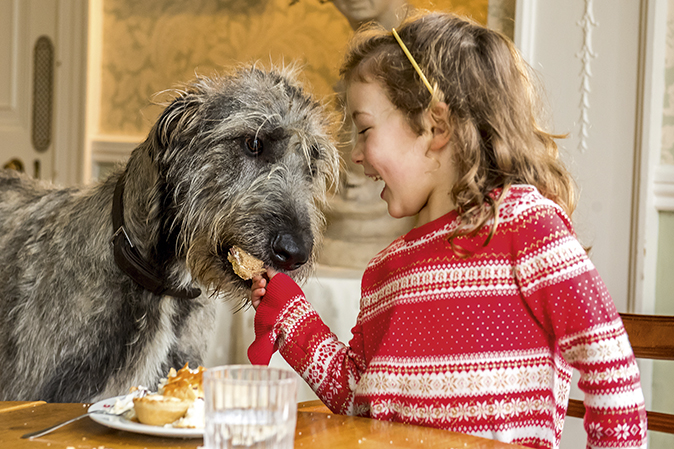
After the last wolf was killed in Ireland in the 18th century, the breed came close to dying out and it fell to two Victorian Scots to revive it: Maj Richardson lived in Dublin and Capt Graham began breeding in Gloucestershire, outcrossing with Scottish deerhounds. The first modern Irish wolfhounds were registered with the English Kennel Club in 1886.
The breed continued to be a favourite of the aristocracy: that great sporting Diana, Elizabeth, Empress of Austria, who travel-led to Ireland and Leicestershire for the hunting, had a brace of Irish wolfhounds: Shadow and Plato.
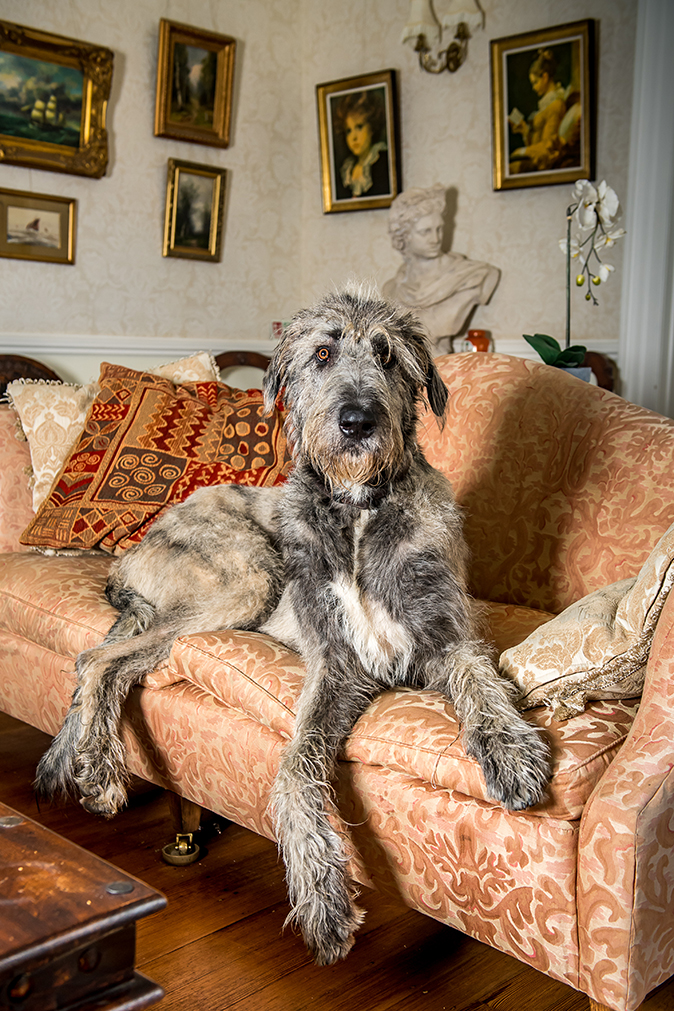
A source of great pride for the Irish, the wolfhound features in the emblem of the national bank, founded by Daniel O’Connell, and the breed has been sought out by wealthy Americans with Irish ancestry. The film director John Huston kept them and John F. Kennedy, perhaps with his own Camelot in mind, had one at the White House.
Today, the Irish wolfhound is no longer the preserve of the aristocracy and is prized as a family pet rather than a hunter, but owners do need sizeable grounds.
Danielle Rolfe and her husband, Guy, bought their first wolfhound, Montgomery, when they moved to Penton Park at Penton Mewsey in Hampshire. Once the country seat of William Cubitt, when he was Lord Mayor of London, it’s now owned by Mr Rolfe’s parents and run by the family as a wedding venue.
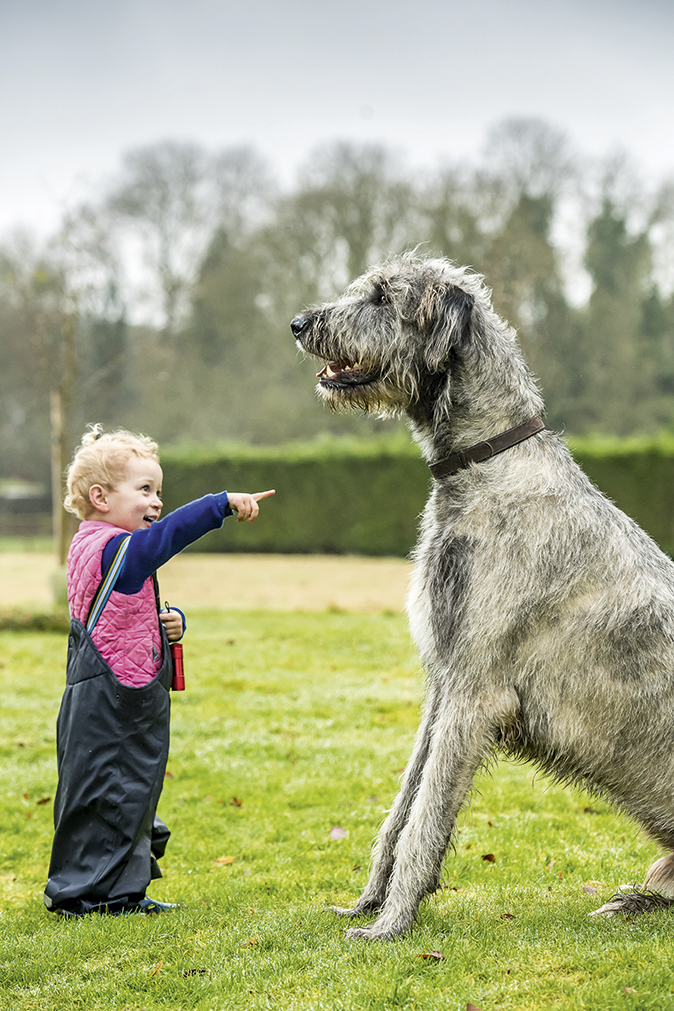
‘No breeder will let you buy a wolfhound without being checked. My uncle, who is on his fourth, originally had to submit aerial photos,’ Mrs Rolfe discloses – these were to satisfy the breeder that the dog had sufficient space. Monty proved to be the archetypal ‘gentle giant’ with the couple’s three little girls.
‘When they were babies, all of my children used to lie on him to drink their bottles,’ she continues. ‘They’re very conscious of their pack; when I used to take the twins out in the double buggy, Monty would place himself between the girls and the friend we had gone to see.’
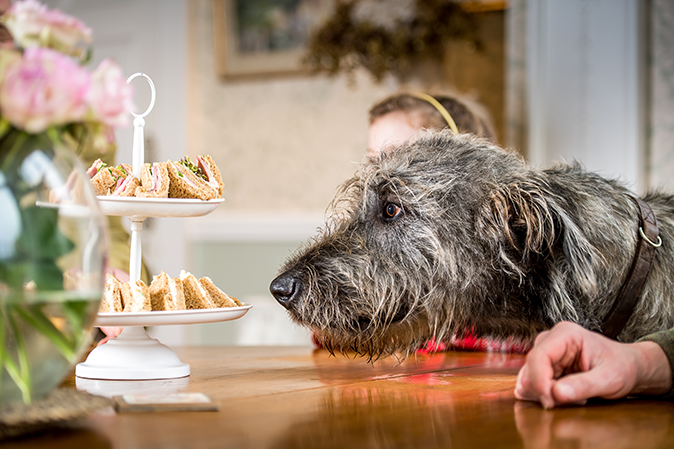
It was heartbreaking, then, when Monty had to be put to sleep, aged just six, due to cancer. A neighbour put the Rolfes in touch with the Dukesarum kennel and Miss Styler’s breeder, Glenys Gwilliam. Once they had been approved – for Mrs Gwilliam, the people are as important as the place as wolfhounds are ‘soulful dogs and crave that interaction with humans more than anything else’ – Marmaduke joined the household.
At the age of 10 months, he already stands 36in at the shoulder and, although still very puppyish, he’s displaying the breed’s wonderful traits and temperament, following two-year-old Camilla around the garden to keep an eye on her.
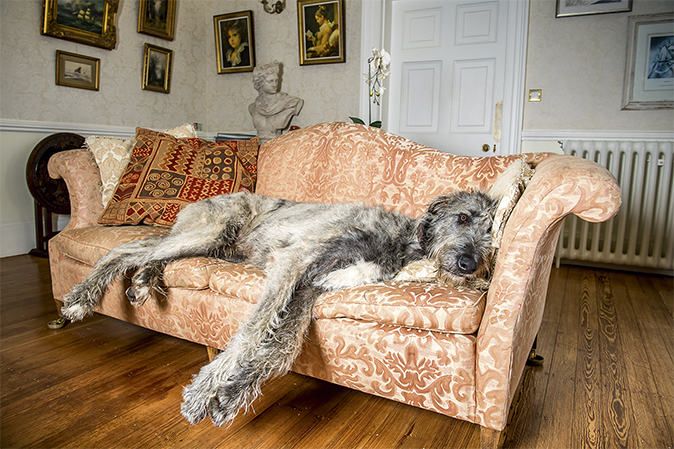
‘However, the minute a wedding cake comes into the house, we’re on lockdown,’ Mrs Rolfe adds hastily. ‘He will go and find what he’s not allowed.’ To date, this has included a roast chicken, a whole Brie, several pats of butter and a sofa. Monty once wolfed down a delivery of scallops and king prawns, that had been ordered from a Chelsea fishmonger for a family barbecue.
Space is essential for an Irish wolfhound, because, when you’re as tall as a Shetland pony and the kitchen table is at shoulder height, all your accoutrements are Brobdingnagian. Marmaduke’s bowl is the size of a horse’s feed bucket and, instead of a stick, he helps himself to the contents of the log basket. He also refuses to get into the back of the family’s Discovery, much in the way that some big horses won’t load into a trailer.
Despite this, Maura Lyons, a molecular geneticist who is heavily involved with efforts to improve the health of the breed, manages to keep three wolfhounds at her two-bedroom cottage in Angus – although she reveals that ‘we don’t mind sharing our sofas’ and ‘Florrie gets into bed with us’. Florrie, along with Myrtle and Dahlia, is also ‘fond of gardening’, creating some ‘spectacular holes’ – think The Great Escape.
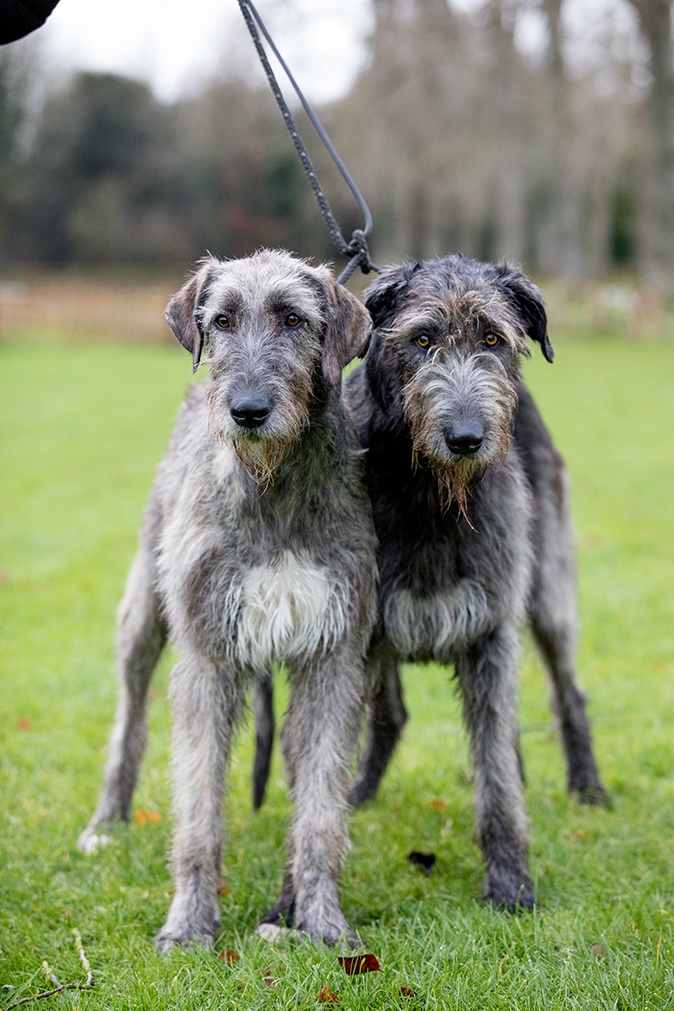
‘They need exercise, like any other dog, but they’re not high-energy, like spaniels and labradors,’ Dr Lyons continues. As with other sighthounds, ‘they’ll take a bit of exercise, then like to take it easy’.
She speaks warmly of Miss Styler’s efforts, as patron of the Irish Wolfhound Health Group, to try to reduce the heart problems and osteo-sarcoma that can affect the breed. Miss Styler hosts fundraisers and regular heart testing at Lake House and there’s a bone-cancer research project running with Nottingham Vet School. If problems can be identified early, Dr Lyons explains, ‘then owners know that you don’t breed from that dog’.
The Irish wolfhound has graced these isles for thousands of years. Thanks to the efforts of Miss Styler and fellow passionate advocates, the wolfhound is looking to the future, as well as the past.
Dances with wolves...
- An Irish wolfhound is the regimental mascot for the Irish Guards—it’s currently a five-year-old dog called Domhnall (‘My regiment and other animals’, February 11, 2015)–and ‘The Fighting 69th’ (1st Battalion, 69th Infantry), one of the most decorated units in the US Army. The 69th’s wolfhounds are the only animals permitted in the St Patrick’s Day parade on Fifth Avenue in New York
- Sporting artist Cecil Aldin repeatedly painted his wolfhound, Micky, alongside Cracker the bull terrier in the charming book Sleeping Partners
- Other famous owners have included the actor Rudolph Valentino, who left a dog valued at $5,000 (£3,735) when he died in 1926, and the Regency romance novelist Georgette Heyer, whose bitch, Misty Dawn, stood 33½in at the shoulder
- Many think Sir Arthur Conan Doyle had an Irish wolfhound in mind for The Hound of the Baskervilles – ‘a great black beast, shaped like a hound, yet larger than any hound that ever mortal eye has rested upon’ – but, as Ruth Rendell has noted, the illustration by Sidney Paget for The Strand Magazine (and on the wall at Baker Street Tube station) looks more like a German shepherd
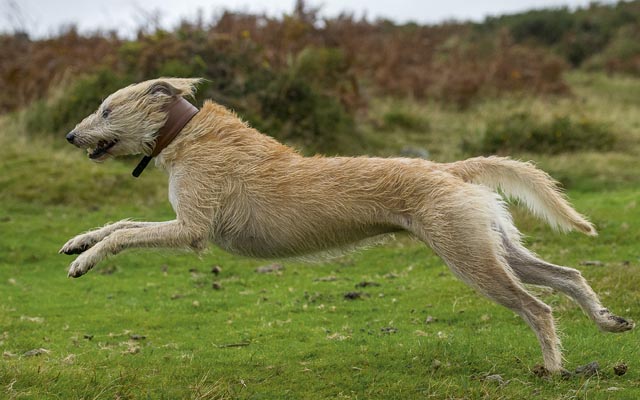
For the love of lurchers
We discovers why lurchers are one of life's guilty pleasures.

Battersea Dogs Home's place in the country, where you'll find dogs for walking and working
Battersea Dogs Home isn't only in Battersea – they also have centres out in the country where you could find the
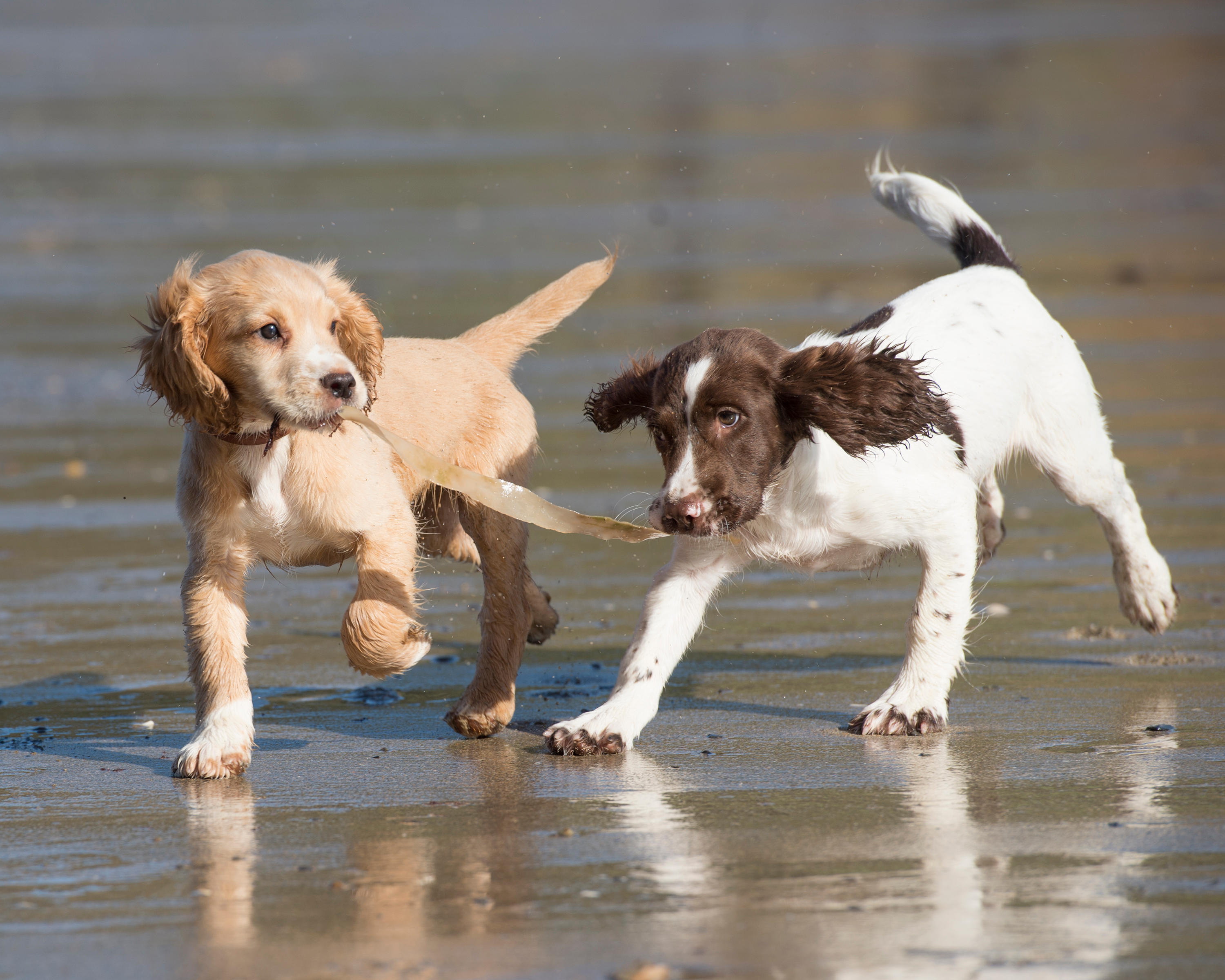
Credit: Alamy
Cocker spaniel versus springer spaniel: What owners need to know
Which is the more popular spaniel, the springer or the cocker? Shooting Times's David Tomlinson weighs up the pros and
-
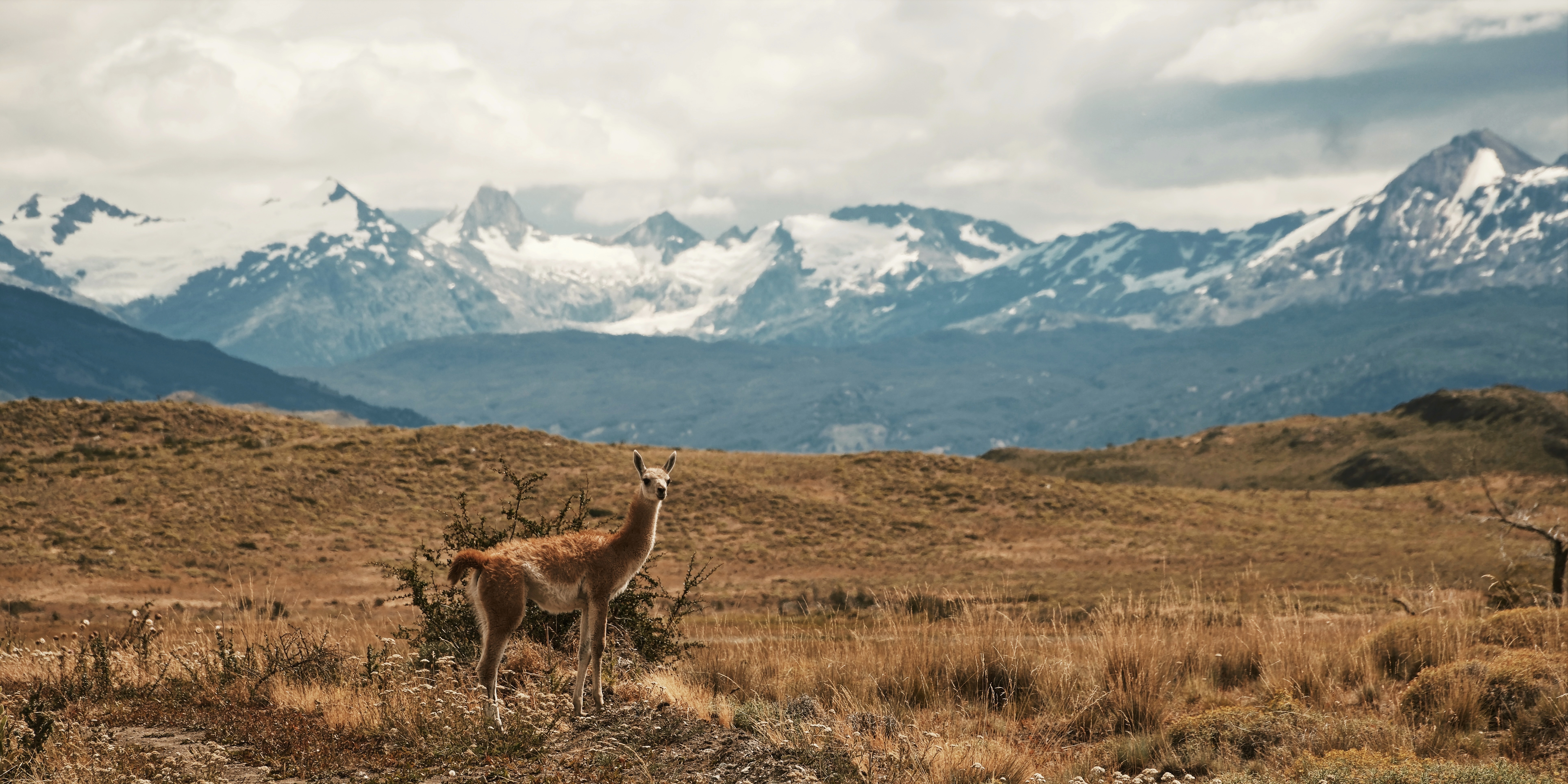 'This wild stretch of Chilean wasteland gives you what other National Parks cannot — a confounding sense of loneliness': One writer's odyssey to the end of the world
'This wild stretch of Chilean wasteland gives you what other National Parks cannot — a confounding sense of loneliness': One writer's odyssey to the end of the worldWhere else on Earth can you find more than 752,000 acres of splendid isolation? Words and pictures by Luke Abrahams.
By Luke Abrahams Published
-
 The man who trekked Bhutan, Mongolia, Japan, Tasmania and New Zealand to bring the world's greatest magnolias back to Kent : 'A whirlwind of charm and energy... and a prince among plantsmen'
The man who trekked Bhutan, Mongolia, Japan, Tasmania and New Zealand to bring the world's greatest magnolias back to Kent : 'A whirlwind of charm and energy... and a prince among plantsmen'Magnolias don't get any more magnificent than the examples in the garden at White House Farm in Kent, home of Maurice Foster. Many of them were collected as seed in the wild — and they are only one aspect of his enthralling garden.
By Charles Quest-Ritson Published
-
 Everything you need to know about one of sport's most gruelling rivalries
Everything you need to know about one of sport's most gruelling rivalriesThis year's Boat Race is expected to play out to a global audience of 100million.
By Amie Elizabeth White Published
-
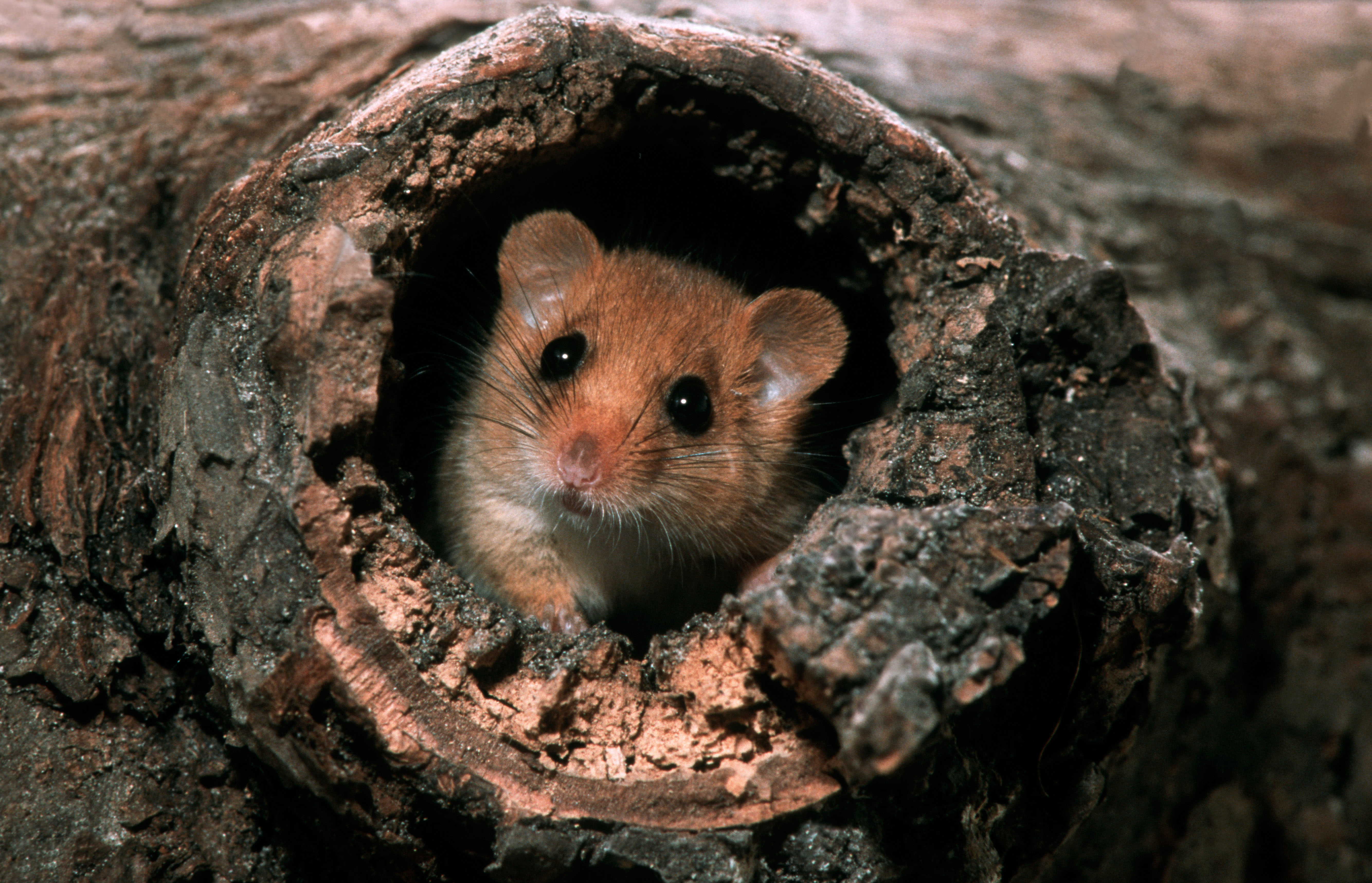 The humble hazel dormouse — 'the flagship species of the health of our countryside'
The humble hazel dormouse — 'the flagship species of the health of our countryside'The sleepy and very sweet hazel dormouse is one of Britain's rarest mammals.
By Jack Watkins Published
-
 The grass is always greener: Follow in the footsteps of Sir Andy Murray and play in The Giorgio Armani Tennis Classic
The grass is always greener: Follow in the footsteps of Sir Andy Murray and play in The Giorgio Armani Tennis ClassicThere’s no better time of year than the summer grass court tennis season.
By Rosie Paterson Published
-
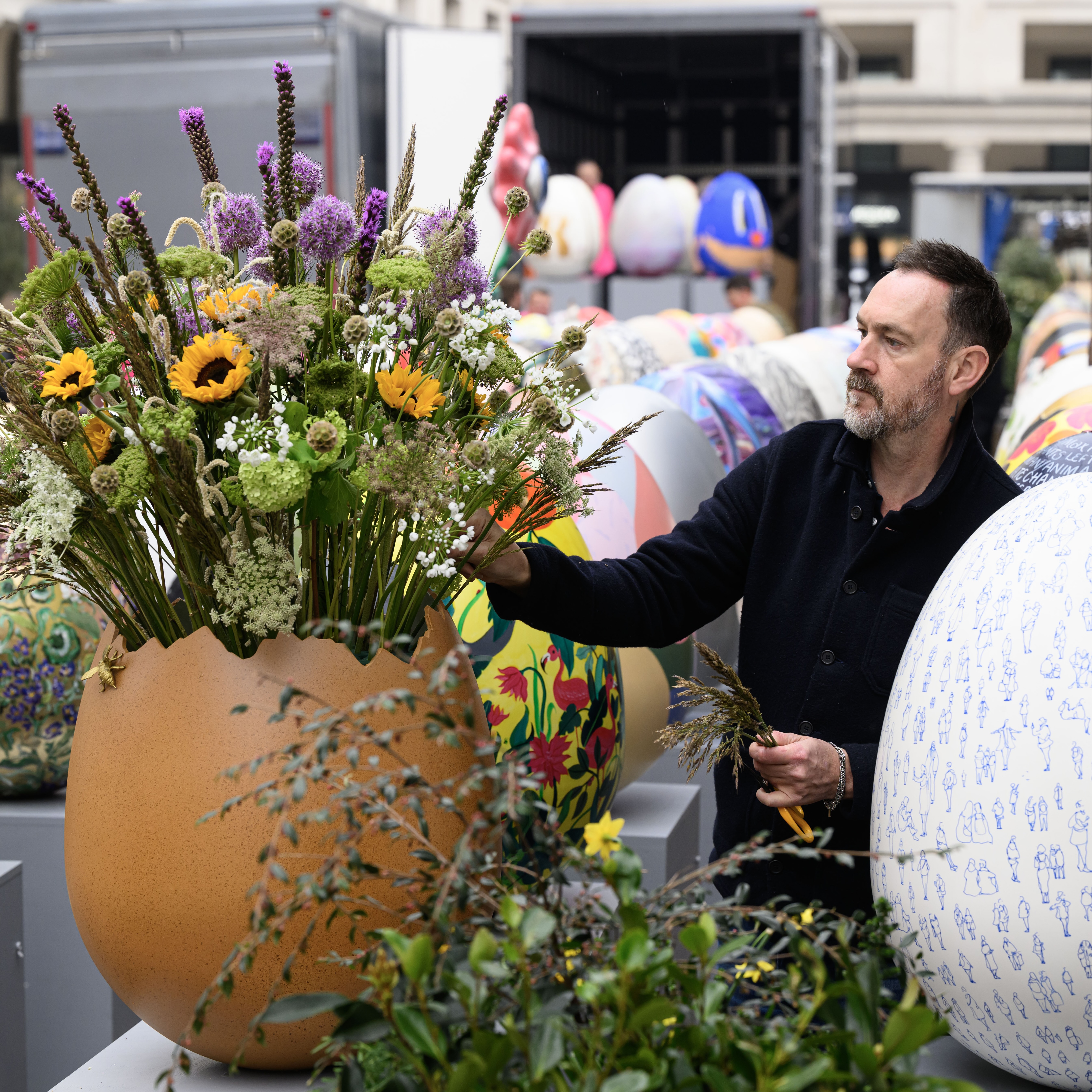 You've gotta catch them all: Everything you need to know about London's giant Easter egg hunt
You've gotta catch them all: Everything you need to know about London's giant Easter egg huntFortnum & Mason, Anya Hindmarch and Chopard are among the companies that have lent a creative hand.
By Amie Elizabeth White Published
-
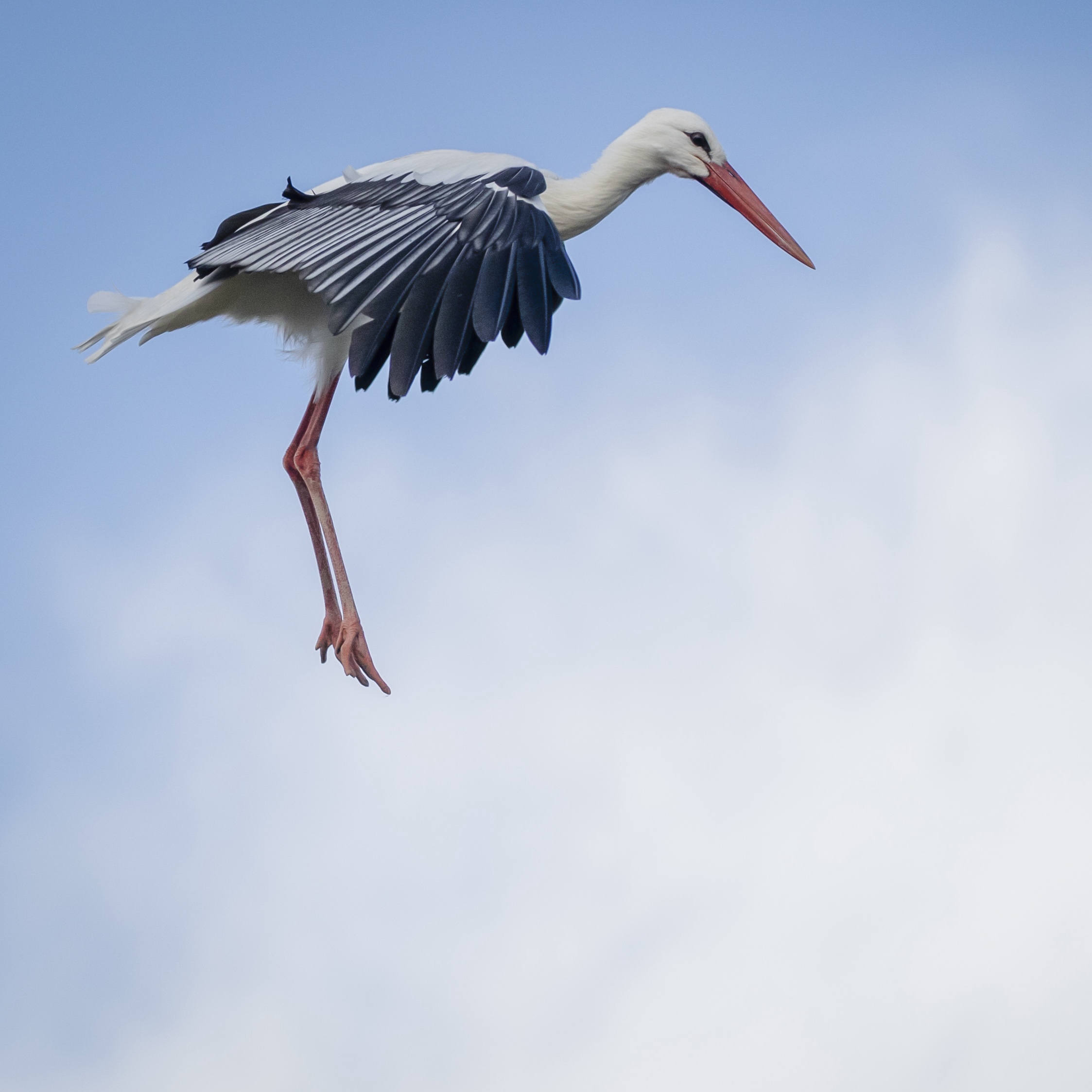 The UK gets its first ‘European stork village’ — and it's in West Sussex
The UK gets its first ‘European stork village’ — and it's in West SussexAlthough the mortality rate among white storks can be up to 90%, the future looks rosy for breeding pairs in southern England.
By Rosie Paterson Published
-
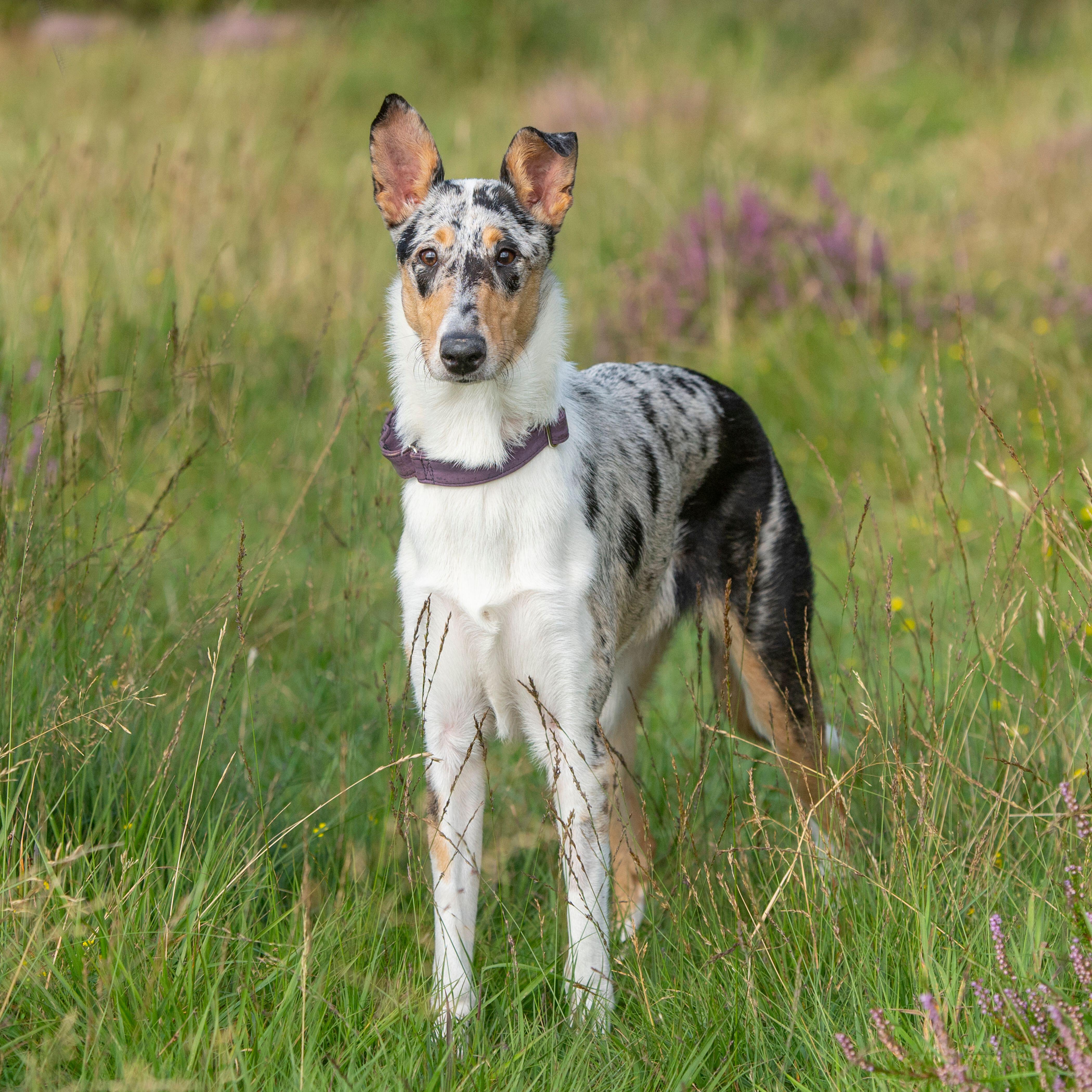 Can't you hear me S.O.S? Our treasured native dog breeds are at risk of extinction
Can't you hear me S.O.S? Our treasured native dog breeds are at risk of extinctionDo you know your Kerry blue terrier from your Lancashire heeler? A simple lack of publicity is often to blame for some of the UK's native dog breeds flying dangerously low under-the-radar.
By Victoria Marston Published
-
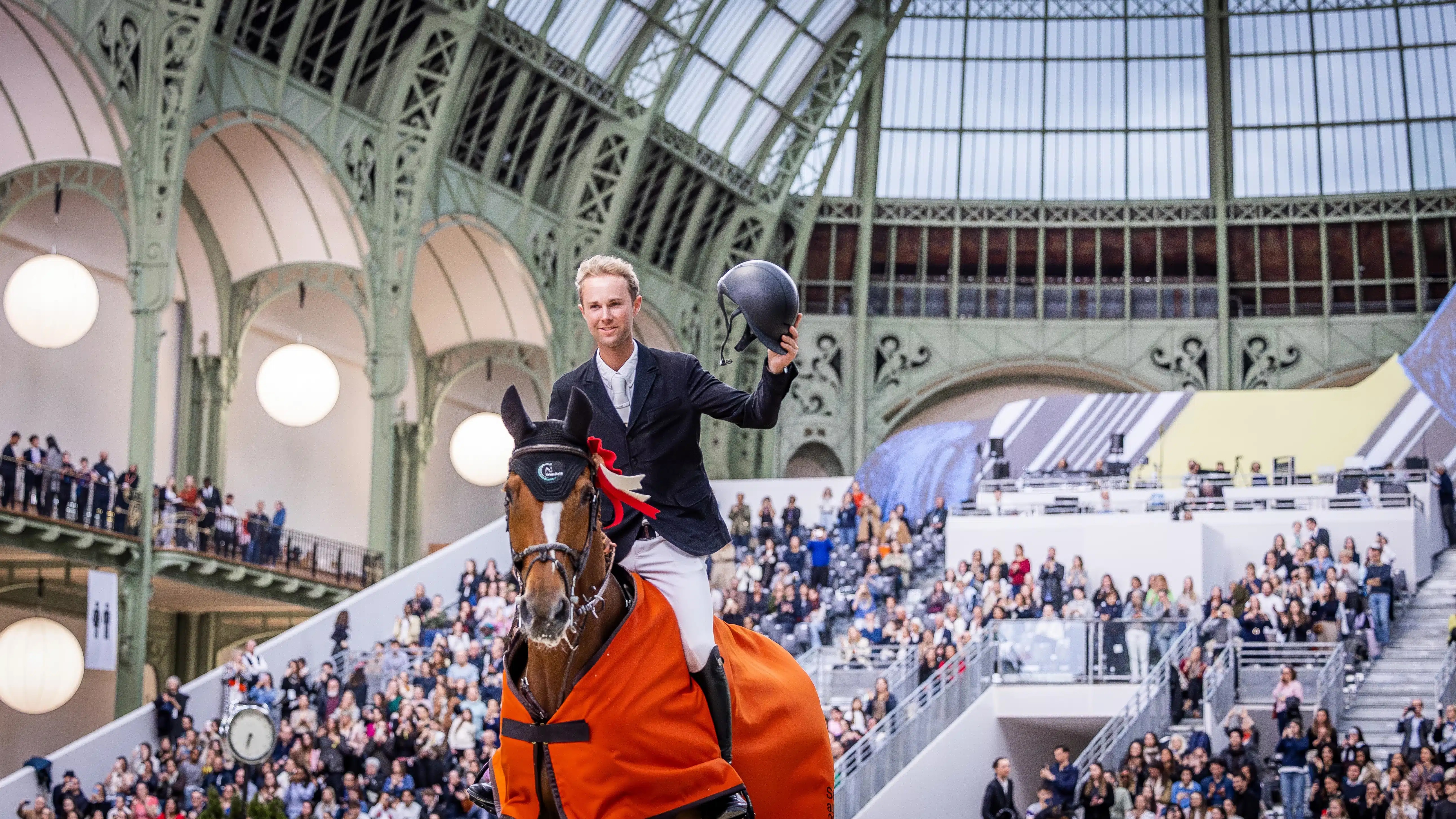 The prestigious Saut Hermès was a tantalising taste of what to expect when Paris's Grand Palais reopens to the public in June
The prestigious Saut Hermès was a tantalising taste of what to expect when Paris's Grand Palais reopens to the public in JuneThe Grand Palais in Paris, France, has been closed to the public for extensive renovation works since 2021.
By Rosie Paterson Published
-
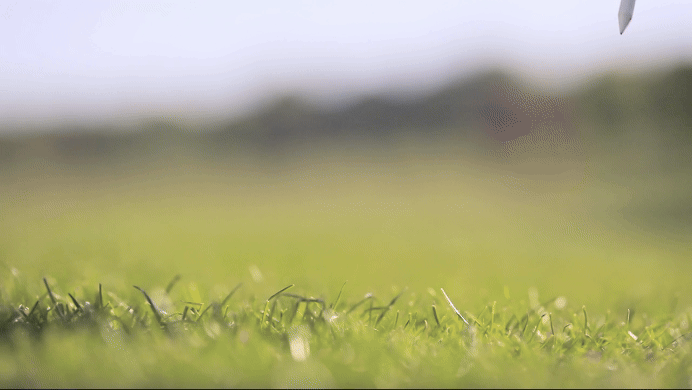 Curious Questions: Why do golf balls have dimples? And why are tennis balls furry?
Curious Questions: Why do golf balls have dimples? And why are tennis balls furry?As the weather picks up, millions of us start thinking about dusting off our golf clubs and tennis rackets. And as he did so, Martin Fone got thinking: why aren't the balls we use for tennis and golf perfectly smooth?
By Martin Fone Published